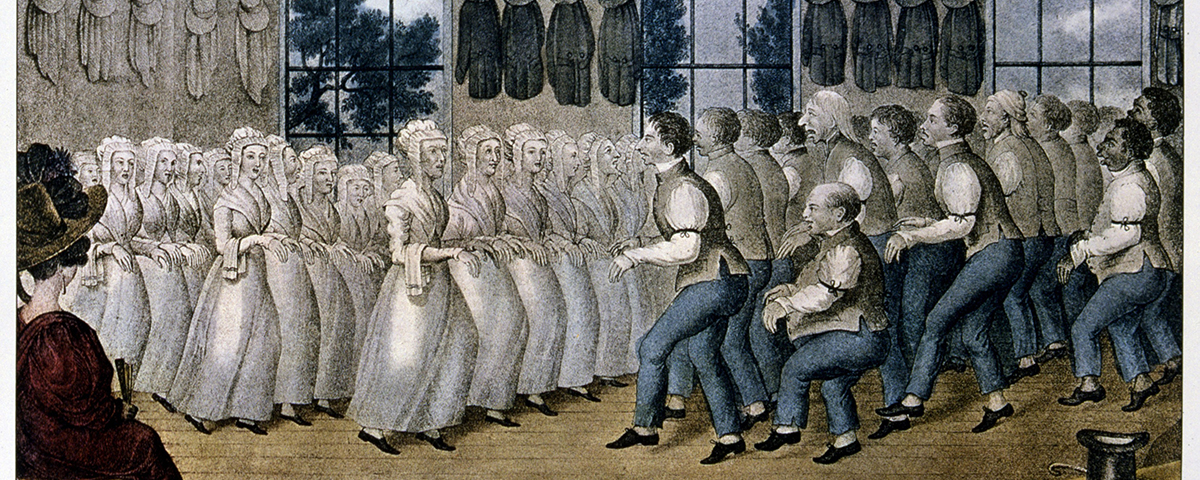The ecstatic religious movement endowed America with a style of its own
IN THE 1980s, commenting on widespread interest in Shaker-made furniture, Sister Mildred Barker, spokeswoman for the sect’s last surviving community, quipped, “I almost expect to be remembered as a chair or a table.” Sister Mildred, who died in 1990 at age 92, belonged to Maine’s Sabbathday Lake Shaker Village, the oldest continuously surviving religious communities in the United States.
Shakerism was the most successful and enduring of many social experiments that flourished in 19th century America. A sect of radical mystics from England seeking to emulate Christ, the Shakers crossed the Atlantic to flee “the evils of the World.” In America, they lived communally in self-sustaining villages, practicing gender and racial equality and humane treatment of animals. Shakers freed slaves, raised orphans, and cared for the infirm. Throughout the sect’s history a demand that members forswear sex has made the Shakers both notorious and rare. For more than a century, their calling card in the larger culture has been appreciation for the things they made, exemplified by oval bentwood containers called Shaker boxes. Shakers are scarce—as of publication, two remained. However, the Shaker legacy still exerts incalculable influence, and the sect has outlived more than one party who predicted its extinction.
Coffee table books and museum catalogs illustrate and explain Shakerism—an irony, since the faith’s founder, Ann Lee, an illiterate, eschewed written interpretation of her sect’s beliefs. The material world held little interest for the working-class prophetess, and one of the faith’s strongest principles is the relinquishing of personal possessions. Meanwhile, huge sums now go to purchase original chairs, candle stands, cupboards, and other handmade objects that have come to represent “Shaker” as an aesthetic.
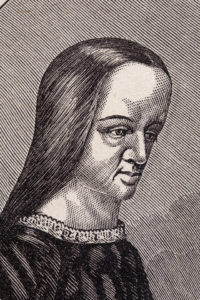
“Hands to work and hearts to God” is Ann Lee’s best-known dictum. In striving for heaven on earth, generations of Lee followers practiced perfectibility in objects they crafted, buildings they constructed, and farms they tended. Forgoing ornamentation, these mostly anonymous artisans devised an austere style that became universally admired and imitated even as the Shakers themselves dwindled into obscurity.
Shakerism began near Manchester, England, in the 1700s among Protestant dissenters who rejected liturgical traditions to seek a more intuitive understanding of God’s will. These seekers believed firmly in the Second Coming of Jesus Christ. Townsfolk derided them as “Shaking Quakers” for the way they were inclined to tremble as the spirit moved them; the term soon shrank to the informal “Shakers.”
The group’s leaders, Jane and James Wardley, who were tailors by trade, may have been Quakers. Jane Wardley had prophetic visions and preached that in his return Christ would take the form of a woman.
Anne Lees—she dropped the “s”—was the first or second of eight children born into poverty in Manchester in 1736. Her father was a blacksmith.
In a squalid flat on Toad Lane the girl watched her mother weaken giving birth to one child after another; she is believed to have died in childbirth. According to later Shaker hagiography, Lee castigated her mother for giving in to “lustful gratifications.”
The girl worked on a cotton loom, and then as a velvet cutter and a hatter. She was devoutly religious with mystical tendencies, typical of the 18th century, an age rife with ecstatic spirituality, collective and individual, and expressed by visions, prophecies, and other experiences. Spontaneous talking in tongues, convulsive fits, swoons, and other manifestations of spirit possession were prevalent during Lee’s youth. Her young adulthood saw much economic change, as Manchester evolved from market town to industrial center. Factory owners made enormous profits; workers lived abysmally. Many in the region believed the world was about to end.
In 1758, Lee, 22, joined the Wardleys and their small band of “Believers.” Lee had been experiencing a despair that deepened after she reluctantly married blacksmith Abraham Standerin. Bearing four children, all of whom soon died, she stopped having sex with Abraham and involved herself more with the Wardleys, agitating enthusiastically when the group disrupted local congregations to denounce the Anglican Church as corrupt. Authorities fined and sometimes arrested Believers for blasphemy. Behind bars, Lee had visions of Christ and a revelation that convinced her that coitus was “the prolific source of evil.” Many mystical sects proselytized for celibacy, but Lee’s zeal and charisma as an advocate were galvanizing. She saw herself as a vessel of the Second Coming. “It is not I who speaks, it is Christ who dwells in me,” she said. The Shakers came to believe in Christ’s communion with “Mother Ann,” as she became known, fulfilling God’s duality by being both masculine and feminine. The sect’s vow of celibacy—initially a voluntary commitment; in the early days, families could join—made conversion a tough sell, but Mother Ann continued to preach repentance through confession, celibacy, and pacifism. Angry crowds beat and stoned her as a witch for endorsing female emancipation.
The Wardleys’ circle consisted mostly of artisans and laborers. James Whittaker, a weaver, had a revelation. “I saw a vision of America,” Whittaker wrote. “And I saw a large tree, and every leaf thereof shone with such brightness as made it appear like a burning torch, representing the Church of Christ, which will yet be established in [that] land.” In summer 1774, Whittaker, Ann Lee, her husband Abraham, her brother
William, and five other Believers boarded a westbound ship at Liverpool. To a dockside crowd jeering that the rickety packet would sink, Mother Ann calmly replied, “God will not condemn it while we are in it.” The vessel survived a battering storm.
At New York harbor, the Believers debarked amid a growing rebellion. They separated to find work, not regrouping until months later, when several of the faithful settled a swampland northwest of Albany that had been part of a Dutch manor. Lee stayed in New York City with her husband while their comrades drained the bog, which Indians called Niskeyuna and the Dutch, Watervliet. The Believers christened their parcel Wisdom’s Valley. Abraham deserted Ann, who came north to join the group, now living in a rough cabin. “The outpouring of the Holy Spirit upon honest, prayerful souls served as the only guide,” a Shaker elder later wrote.
Surrounded by wilderness, the Believers could worship with abandon, expressing spirit possession through frenzied dancing, gyrating, and vocalizing. Years later, a visitor described two young Shaker women whirling “nearly as fast as the rim of a spinning wheel” before joining in a group dance. “This done, several of the young people, both men and women, began to shake and tremble in a most terrible manner,” the witness recounted. “The first I perceived was their heads moving slowly from one shoulder to the other—the longer they moved the quicker and more violently they shook.”
In 1779, curious visitors from east of the Hudson River came to Wisdom’s Valley to learn more about the community. This interest encouraged Ann Lee, her brother William, and Whittaker to travel eastern New York and New England, preaching. Along with hostility the trio encountered flickers of the Great Awakening of the 1740s, a time of Protestant revivalism in the Northeast. Members of other sectarian societies voiced sympathy for Shaker doctrine. An early American convert was Joseph Meacham, a leader of the millennarian New Light Baptists in New Lebanon, New York, near the Massachusetts border.
Visitors, pious or curious, began attending Shaker services at the rudimentary farm in Watervliet. Word spread of these “strange and wonderful Christians,” as a Meacham biographer described them, but the sect also attracted harsher attention. Locals distrusted the unconventional folk from Britain who refused to fight for the patriot cause, arresting Shakers for being Tory sympathizers.
Lee was held weeks longer than others until Whittaker appealed to Governor George Clinton, who freed Lee “due to lack of any treasonable evidence.”
In 1782, Ann Lee, William Lee, and Whittaker walked hundreds of miles to preach the gospel while enduring abuse and violence. The sect’s insistence on sexual abstinence led critics to paint the Shakers as foes of family life. At Harvard, Massachusetts, the trio drew large crowds—and was run out of town with whips and clubs. Mother Ann was 48 when she died at Watervliet in 1784. When the Marquis de Lafayette, pursuing an interest in mesmerism, or hypnosis, visited the farm three weeks later, he encountered almost 150 Believers worshiping in a wooden hall. The seeds of a new faith had been sown.
Whittaker and Meacham started a second Shaker settlement in New Lebanon, with a meetinghouse. The white structure had two front doors; one for men and one for women, referred to as Brothers and Sisters. Members donated land and buildings and pooled their resources to buy more property. The expanding community, the Shakers’ first official ministry, was renamed Mount Lebanon. Two more Shaker villages took root—at nearby Hancock, Massachusetts, and in 1782-83 at Sabbathday Lake near New Gloucester, Maine.
Shaker industry was thriving. The Watervliet village had begun selling vegetable seeds and medicinal herbs, earning a tidy profit. Innovators from the first, the Shakers marketed kitchen-garden quantities of seed in paper
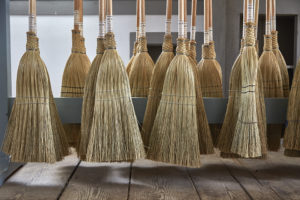
packets, crafting small crates in which to take their products to farms and stores. The market quickly came to recognize Shaker seeds, herbal remedies, and elixirs for quality and fair price.
After Whittaker’s death in 1789, Meacham, like Mother Ann a charismatic prophet, became first elder. He also had business and administrative acumen and experience. When he chose as co-elder Lucy Wright, a companion of Ann Lee’s, grumblings and defections ensued, but Wright, like Meacham a highly capable New Englander, won over skeptics by successfully managing the sect’s 1805 expansion into the Ohio River Valley.
Communal living conferred benefits: converts supplied a dedicated labor force and donated such assets as they had, allowing for mill construction and equipment purchases. Soon there were 11 Shaker villages, each with a dining hall requiring tables and dozens of chairs, and dwellings needing beds, cupboards, and candle stands. Members made these furnishings from local pine, maple, cherry, and birch, wove cloth of wool sheared from sheep they raised, and sewed clothing. They forged their own tools. In keeping with Mother Ann’s teachings, Shaker craftsmen sought perfection in all things, whether a clothes peg or the country’s largest stone barn, constructed at Mount Lebanon in 1856.
Early Shaker furnishings consisted of items converts donated, usually in Federal styles that the settlers reconfigured for practicality. Soon Shaker artisans were fashioning streamlined utilitarian versions. Among the sect’s earliest endeavors were oval pantry boxes, shaped by steaming and bending hickory strips. By 1796, Mount Lebanon, now the Shaker furniture-making nexus, had a water-driven sawmill.
Unlike similar sects, Shakerism welcomed modernity, implementing and often improving upon technological advances. Shakers get credit for inventing the threshing machine, the spring-loaded clothespin, vacuum-sealed
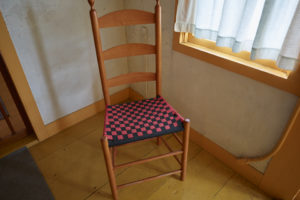
tin cans, an early washing machine, the water turbine, tilt-back chairs, and, most famously, the flat broom. Admiration for their industriousness and probity overcame suspicion and hostility. Shaker services drew large crowds, whether for edification or to hear the inspiring hymns.
Officially titled the United Society of Believers in Christ’s Second Appearing, the sect accepted “Shakers,” the nickname that had followed them from England. Meetinghouses were large and airy to accommodate physically exuberant worship. Gyrating evolved into ritualized dance routines celebrating obedience rather than individuality. For practicality, Shaker communities sometimes divided labor along gender lines: Women operated the seed and herb businesses, made clothes, and cooked; men were farmers, carpenters, and blacksmiths. Young girls picked flowers; boys sorted broomcorn stalks.
Shakerism reached its apogee after the War of 1812, as demand for the sect’s wares grew as the Shaker reputation for superior products spread.
“Work done by the Sisters: Two thousand palm leaf bonnets made for sale!” a Brother at Watervliet proudly recorded in an 1836 inventory. Baskets woven in a distinctive diagonal twill pattern became an important line. Applesauce sold by the barrel. Sales routes for garden seed, dried herbs, and corn brooms stretched across the country. Brothers steering wagonloads of goods would be on the road for weeks.
Shakers bought enslaved Africans in order to free them. Sister Rebecca Jackson, a free African-American at Watervliet, was made eldress at a time when leadership roles for black women were unheard of.
Commercial success underwrote charity work. During an 1830s cholera epidemic in New York City, Shaker villages sent wagon trains of provisions to the hard-hit metropolis. Recessions in the larger society brought “the World’s people,” sometimes entire families, knocking on Shaker doors and seeking support. In an era with no social welfare, the sect functioned as a refuge for orphans, widows, unwed mothers and others in need. Anyone willing “to bear the cross of a celibate life” and to live in love and peace “out of the common course of the world” could sign the covenant to become a Shaker.
At age 16, youths raised in the faith had the choice of joining the Shakers or leaving for the secular world. In what was essentially an apprenticeship program the Shakers also trained youths in trades. Completing their indentures at 21, many of these young men, to the Shakers’ personal sadness and practical frustration at losing these workers and their contributions, left the shelter of the sect to re-enter the material world. Women were likelier to remain members than men.
Along with creating artworks inspired by spiritualism, Shakers composed hymns like “Simple Gifts,” written in 1848 by elder Joseph Brackett, whose father’s farm was part of a Shaker village in Maine:
’Tis the gift to be simple, ’tis the gift to be free
’Tis the gift to come down where we ought to be,
And when we find ourselves in the place just right
’Twill be in the valley of love and delight.
When true simplicity is gained,
To bow and to bend we shan’t be ashamed,
To turn, turn will be our delight,
’til by turning, turning we come ’round right.
Across their historical span, Shakers numbered almost 20,000 in 19 settlements in New York, Massachusetts, Connecticut, Maine, New Hampshire, Ohio, Kentucky, and Indiana. At Mount Lebanon, the largest village, 600 Believers occupied 150 buildings on 6,000 acres. Mother Ann’s influence reached beyond the Shakers to reformers as diverse as manufacturer and communitarian Robert Owen and socialist philosopher Friedrich Engels. As the villages prospered, the founders’ directives were codified, including a design philosophy for Shaker craftspeople. This serenely linear style, widely recognized as the forerunner to the “form follows function” aesthetic, did not preclude subtle touches such as the curved slats on ladder-back chairs, knobs painted a shade to contrast with drawers, and Shaker boxes’ swallowtail joinery. “Skilled Shaker artisans working together over many years constituted a craft guild possibly unmatched at the time,” wrote historian Stephen J. Stein.
After 1860, however, Shakerism spiraled downward. The Civil War fatally disrupted agricultural sales. Following the war, young men left farming and the trades for factory jobs or to go west. Secularism swept the nation,
discouraging conversions. “The sect was the product of an age that was passing,” wrote Shaker historian Edward Deming Andrews. “Such principles as submission to authority, the abnegation of self, and communal ownership had diminishing appeal in a country glorifying liberty and the individual or corporate acquisition of property.” New humanitarian efforts such as the Children’s Aid Society reduced the number of children placed with Shakers. In rare instances, Shaker women who became pregnant had to leave the sect and their communities. The celibacy mandate combined with the drop in conversions to reduce villagers’ ranks.
Shakerism became a society of elderly women. One by one the villages closed—Harvard in 1917, Watervliet in 1938, Mount Lebanon in 1947. Yet interest in Shaker culture grew, augmented by nostalgia for the virtues they embodied, such as simplicity, honesty, and self-sufficiency. Shaker artifacts came to the attention of folklorists and collectors. In 1944, composer Aaron Copland adapted the Shaker hymn “Simple Gifts” as a theme in his score for the Martha Graham ballet “Appalachian Spring.” Since then the song has become a standard of American folk music.
Shaker-made objects bring tens of thousands of dollars at auction, and 10 Shaker villages have been restored as heritage museums, including four National Historic Sites: Mount Lebanon; Hancock, Massachusetts;
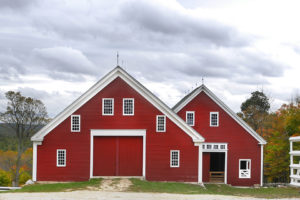
Canterbury, New Hampshire; and Pleasant Hill, Kentucky. Sabbathday Lake, historically the smallest and poorest eastern villags, is the only active Shaker community, with two members: Sister June Carpenter, 79, and Brother Arnold Hadd, 61. And outside Colonie, New York, a suburb of Albany, the grounds of the original Shaker settlement, now Watervliet Shaker National Historic District, includes the gravesite of Mother Ann, set amid rows of plain white headstones in the company of more than 400 early Shakers, men and women, rich and poor, European and African.

